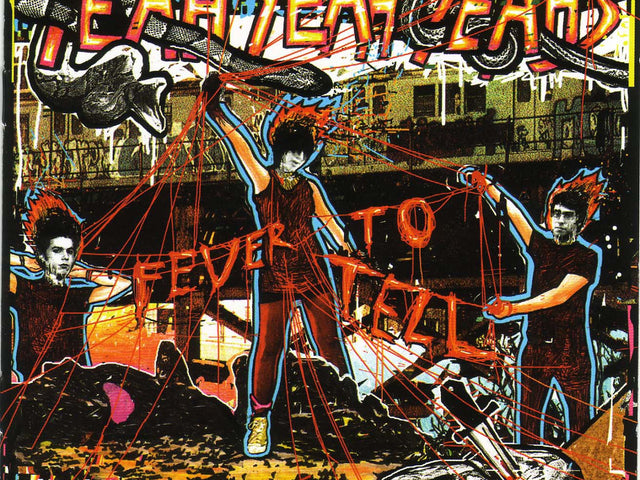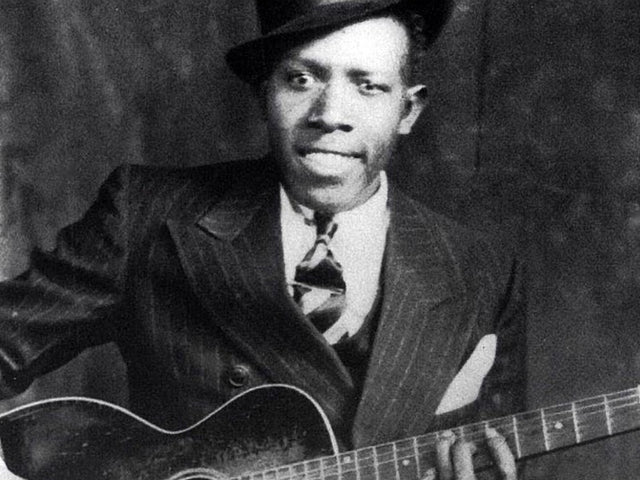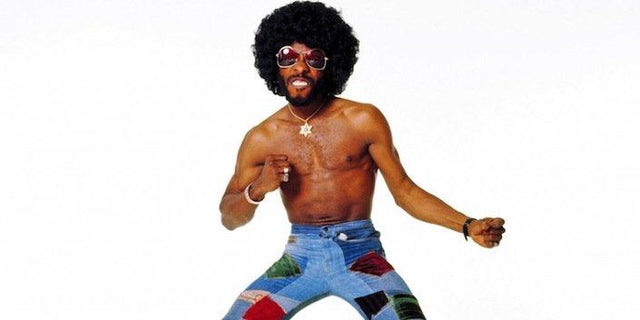Sahip olmanız gereken en iyi 10 Madonna albümü (vinyl)
Madonna Ciccone, 1970'lerin sonunda New York City'e doğru yola çıktığında, tüm zamanların en çok satan kadın kayıt sanatçısı olacağını biliyor muydu? Muhtemelen hayır. Hedefi hemen hemen dansçı olarak başarılı olmaktı. Çeşitli dans gruplarında geçirdiği zamanlar, dans dersleri, yedek vokalist ve dansçı olarak çalışmak, dans kulüplerine gitmek - her şey dans hakkındaydı. Ta ki Breakfast Club grubuna davulcu olarak katılana kadar. O zaman müzik yaratmakla ilgiliydi. Sonunda, solo sanatçı olarak atılım yaptığında, Madonna, 80'lerin başındaki ilk single'larında kulüp sahnesini kanalize etti ve Pop Kraliçesi tahtına yükselişini başlattı.
nMadonna, imajını müzik kadar önemli hale getirdi, cinselliğini sorgusuz sualsiz kullanıp sahiplenerek MTV'nin artan popülaritesinden yararlandı. Cinselliği kullanan ilk müzik yıldızı değil, cinsel içerikli şarkılar kaydeden ilk kadın sanatçı da değil (Irene Scruggs'in "Good Grindin'" şarkısını veya herhangi bir kirli blues şarkısını dinleyin), fakat ticari başarısı ve popülaritesi bunu ön plana çıkardı. Öncelikle onu bir hit tekli sanatçısı olarak reddeden erkek egemen müzik endüstrisinde gücünü ortaya koydu. Hem idolize edildi hem de eleştirildi, müzik videoları etkinlik haline geldi, moda ve kültürel standartlar belirledi. Evet, birçok hit single var ama albümleri, empowerment (güçlendirme), aşk ve kayıp, ruhsal çatışma ve dans ritminin özgürlüğü içindeki yolculuklar.

Madonna
When Madonna released her self-titled debut album in 1983, she already had some club hits under her belt (“Everybody” and “Burning Up”). At a time when mainstream pop was ruled by Michael Jackson thanks to Thriller, Madonna broke through by bringing dance-pop out of the clubs and onto the radio. Her street-smart image helped set her apart from the more traditional pop divas, boldly proclaiming her intent to “rule the world” on television’s American Bandstand, and backing up her ambition with the increased success of her singles, cracking the Hot 100 with “Holiday” and then hitting the top ten with “Lucky Star.” The album itself was a slow-burn but eventually became a top ten seller by the end of 1984. Synth and drum machine heavy, it is both of its time and surprisingly fresh with five tracks written by Madonna, full of irresistible pop hooks and dancefloor allure. Plus, it just sounds fantastic on vinyl. Even the recent reissue is terrific so there’s no excuse.

Like A Virgin
In a provocative album title and cover--with Madonna and her bedroom eyes wearing a wedding dress and a Boy Toy belt-- Like A Virgin (1984) is eye-catching and backs it up with a series of great tracks. Madonna aimed for a smash hit, teaming with famed producer Nile Rodgers, and hit it out of the park. “Material Girl” is the 1980s equivalent of the old Motown hit “Money (That’s What I Want),” where financial security and the men who can provide it are preferred. The lyrical imagery favors the literal over the innuendo, telling her lover that she feels “Like A Virgin,” and that she’ll cover her partner with her love all over their body in “Dress You Up.” Because of the popular music videos, you can’t hear this album without imagining Madonna dressed as Marilyn Monroe or on a gondola lusting over a guy in a lion mask. But she surprises, too, with her soulful cover of Rose Royce’s “Love Don’t Live Here Anymore.” A solid album, front to back, Madonna proved she wasn’t going anywhere.

True Blue
Much had changed when Madonna released her third album True Blue in 1986. Now married, she had also appeared in the films Vision Quest (brief) and Desperately Seeking Susan (co-star) with another film to be released in late summer (Shanghai Surprise). A more industry-seasoned and mature Madonna sought to make more serious statements as well as put music in front of her image. She wrote or co-wrote all tracks and earned a co-producer credit on the album. Personal favorite is the ballad “Live to Tell” about the effects lies can have throughout a person’s life. Madonna wrote all the lyrics and anyone who casts shade on her songwriting ability needs to give this song a sincere listen. Other highlights include the bubblegum “True Blue” inspired by then-husband Sean Penn, “Papa Don’t Preach” which tackled teen pregnancy, and the fun “Where’s the Party” and “Open Your Heart.” True Blue was a global smash, breaking records, and putting her in megastar status with the likes of Prince and Michael Jackson.

You Can Dance
The one thing that cannot be denied is that Madonna is, at her core, dance music. You Can Dance (1987) is a remix album, released back when remix albums were a new thing, and also serves as her first retrospective, taking tracks from her first three albums including early club hits like “Everybody” and “Holiday” with more recent tracks like “Where’s the Party” and the previously unreleased “Spotlight,” which had been recorded during the True Blue sessions. The album also became a must-have for U.S. fans as it included “Into the Groove,” which had previously only been available on singles or the import version of Like A Virgin. The extended remixes of these dance songs includes the work of longtime friend Jellybean Benitez and Shep Pettibone, who turns an already great dance song (“Into the Groove”) into an epic dancefloor burner. Many of the tracks are mixed together and the “Into the Groove” mix into “Where’s the Party” alone makes this essential for any Madonna collection and for your dance party vinyl stack. You Can Dance was recently reissued for Record Store Day so get on it.

Like A Prayer
As a songwriter Madonna had shown she could craft infectious pop and dance hits, but on Like a Prayer she was ready to be more revealing. The overall themes are influenced by her religious upbringing, failed marriage (“Till Death Do Us Part”), and the death of her mother (“Promise to Try”). Working again with producers Patrick Leonard and Stephen Bray, she also collaborated on a duet with Prince (“Love Song”) who also played guitar on three other tracks (“Like a Prayer,” “Keep It Together,” and “Act of Contrition”). She inspires women to demand respect in the outstanding “Express Yourself” and embraces love in the bouncy “Cherish.” At the time of release there was a lot of publicity and controversy over the religious imagery used in the “Like a Prayer” video, which is Madonna being Madonna, but decades later Like a Prayer stands up as one of her greatest artistic achievements and one of the greatest albums of the ‘80s.

The Immaculate Collection
The Immaculate Collection (1990) is a compilation, but unlike most greatest hits albums that just quickly slap together the singles, all the songs (except the last two) were remixed by Shep Pettibone, the first album to use QSound technology. Some of the songs are shortened or sped up with minor differences, and others like “Like a Prayer” and “Express Yourself” are noticeably different with different backing music. It’s that combination of familiar and boundary pushing that makes Madonna so bad ass; getting this comp makes it easy to hear her ‘80s hits altogether but if you want the original mixes, you still need her albums. You also need it for the inclusion of the great ballad “Crazy for You,” which had been on the Vision Quest soundtrack, dance masterpiece “Vogue” which had been on the Dick Tracy-inspired I’m Breathless album, and then-new songs “Justify My Love” and “Rescue Me.” Seriously, every side of this 2xLP is fire, especially the “Express Yourself,” “Cherish,” and “Vogue” stretch on side D. The Immaculate Collection serves as both end-page to a decade that made her a star and prologue for a Madonna ready for the ‘90s.

Bedtime Stories
Madonna joined with Dallas Austin and Dave Hall, along with Nellee Hooper and Babyface, for sixth studio album Bedtime Stories (1994). Her popularity and image had suffered a bit after the more sexually explicit Erotica (1992) and her Sex book. The standard PR move would’ve been to apologize and move on, and promotion for Bedtime Stories seemed to imply a mea culpa was coming, but despite the softer sound Madonna remained defiant and unapologetic. On album opener “Survival” she sings “I’ll never be an angel.” Later it’s “I’m not your bitch don’t hang your shit on me” on “Human Nature.” But it’s not all bite. She wants to get with someone in “I’d Rather Be Your Lover,” get on the dance floor on “Don’t Stop,” and says goodbye to a lover on sexy ballad “Take a Bow.” It’s understated and underrated and it’s classic Madonna; she may have gone for a more mainstream R&B/pop album but she does it on her terms.

Ray of Light
Now a mother of a toddler and having gone through vocal training for the movie Evita (1996), Madonna was ready to show off a new side, reinventing her image yet again, eschewing the glamour for a more natural look. Produced by William Orbit, Ray of Light (1998) veers from electronic and techno to drum & bass, all while maintaining her dance roots, and showing off a more full vocal range. People were wowed by the change but if you were paying attention to Bedroom Stories which had a Björk-penned song and Nellee Hooper’s involvement, you know that Ray of Light is actually a logical progression into electronica. The title track soars, she acknowledges growth and learning from past mistakes on “Nothing Really Matters,” and she mesmerizes on “Frozen.” Many of these songs would fit right on a playlist alongside Björk and the Chemical Brothers. It’s like Madonna woke up one morning and said, ‘I’m gonna be an alternative-pop queen now’ and because she’s freaking Madonna she just does it. Hailed as one of her best, Ray of Light is a must-have.

Confessions on a Dance Floor
Madonna was still a major influencer in the music industry in the early ‘00s but the mixed reception of American Life (2003) had people wondering if she could still bring the heat. Madonna answered them with the inferno that was 2005’s Confessions on a Dance Floor. It is sensory-overload in pink neon, and it rules. As if to stamp out any doubt to Madonna’s desire to turn it up, she samples freaking ABBA on “Hung Up.” The moment you drop the needle you are transported to your own personal club, heart pumping to “Hung Up,” imagining a mirror ball in your living room on “Get Together,” and just throwing down the dish towel and going all-out to “Sorry.” The thing that all club-goers know is that you can find yourself when you cut loose to movement; Madonna explores this as the album progresses, making the dance floor her confessional but there’s no contrition here. Madonna reclaimed the dance crown with Confessions, creating the ultimate modern disco album to which we can all channel our inner dancing queen.

Rebel Heart
It had been ten years since the success of Confessions, and the lackluster reception of Hard Candy (2008) and MDNA (2012) again had fans worried. But as she reminds us on 2015’s Rebel Heart, “Bitch I’m Madonna.” On songs that merge genres like electronic, rap, dance pop, and reggae, Madonna collaborates with a who’s who of artists like Avicii, Diplo, Nicki Minaj, Kanye West, Chance the Rapper, Nas, etc. The 2xLP album is an eclectic mix of songs that somehow manages to be nostalgia riding and forward thinking all at once. Basically, it’s a Madonna album. Like a fabulous warrior-queen, she lays waste to the haters, staying positive over lost love in “Living for Love,” says fuck you to an ex in “Unapologetic Bitch,” and gets sassy on “Bitch I’m Madonna.” On pop ballad “Joan of Arc” she opens up about how she’s not impervious to the critics and later offers recollections of her career in “Veni Vidi Vici” and “Rebel Heart,” reflecting on her status as pop icon, her missteps and triumphs. Rebel Heart showcases a Madonna comfortable, confident, and ready for what’s next.
Marcella Hemmeter, Maryland'da yaşayan serbest yazar ve yardımcı profesördür, California kökenlidir. Son tarihlerle meşgul olmadığında, evi yakınında hiçbir tamale dükkanının olmadığını sıkça dile getiriyor.
Kulübe Katıl!
Şimdi katıl, 44 $'dan başlayan fiyatlarlaExclusive 15% Off for Teachers, Students, Military members, Healthcare professionals & First Responders - Get Verified!







